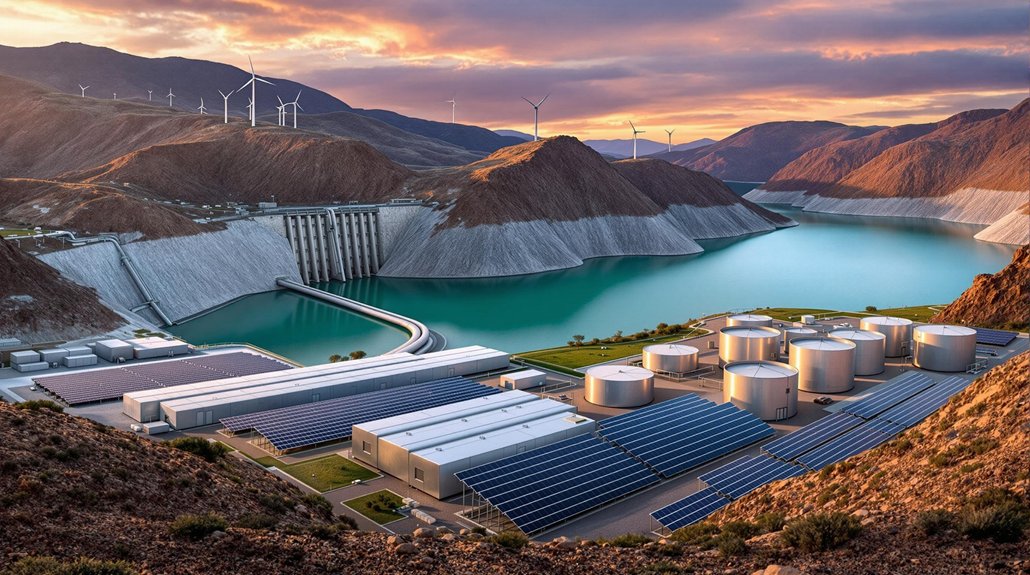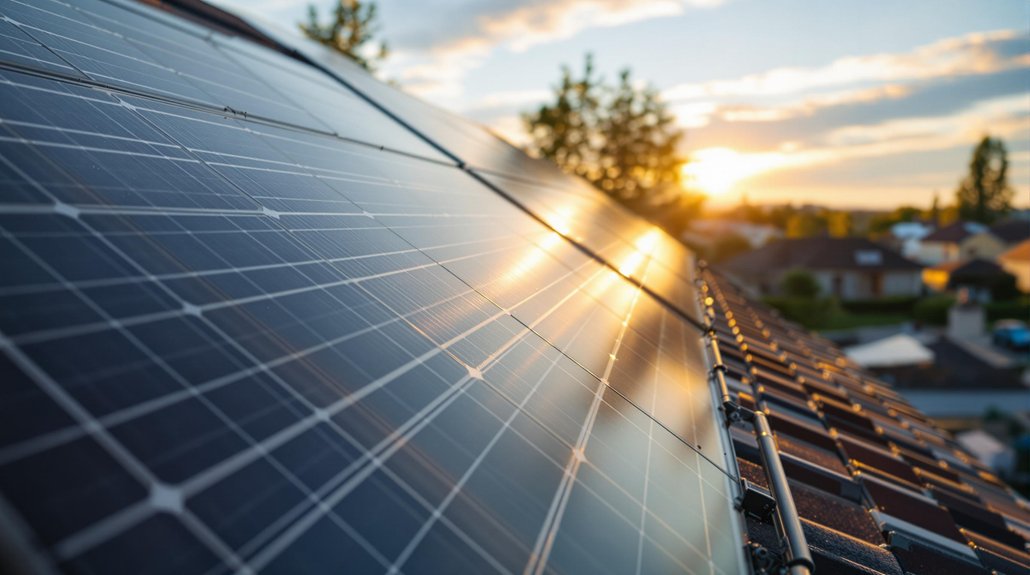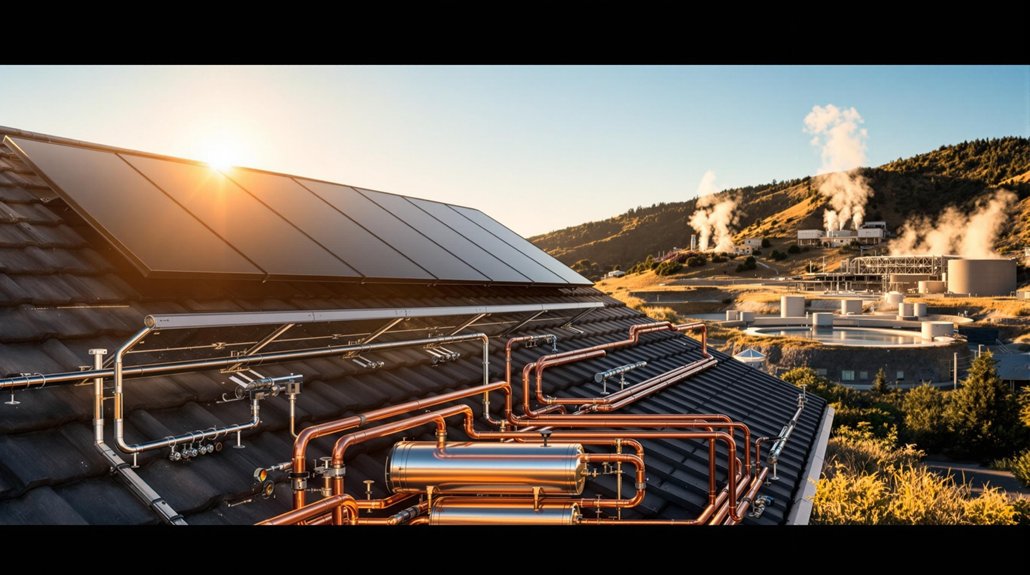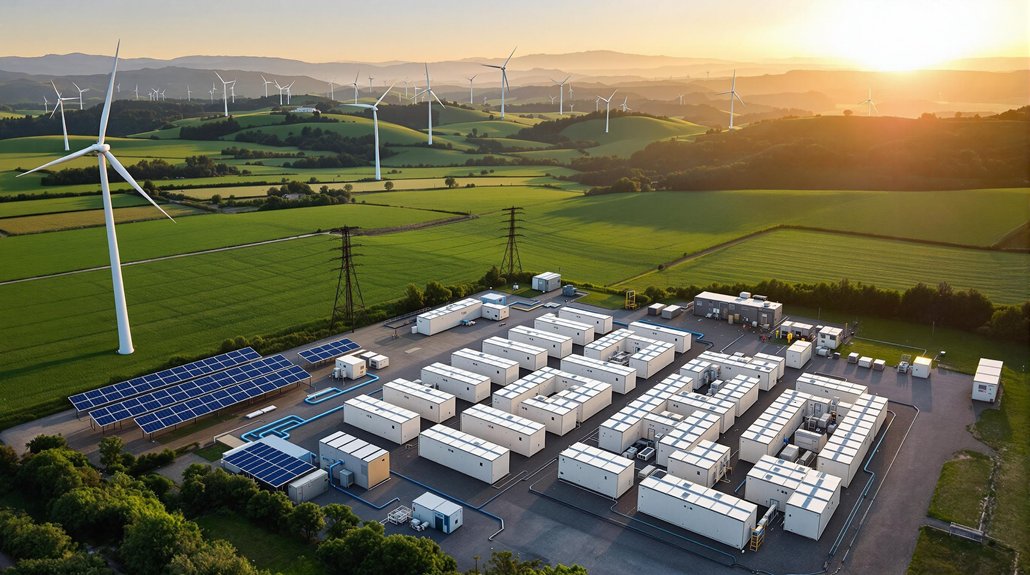Renewable energy storage solutions are transforming our power systems. While pumped hydroelectric storage dominates with 94% of global capacity, battery technologies are growing rapidly as prices fall. Thermal storage, compressed air, and hydrogen systems offer additional options for capturing excess energy. Global storage capacity is expected to reach 1,000 gigawatt-hours by 2030, with major investments in China and Europe. These technologies help balance intermittent renewable sources, eliminate waste, and stabilize electricity supplies. The path to sustainability depends on these innovations.
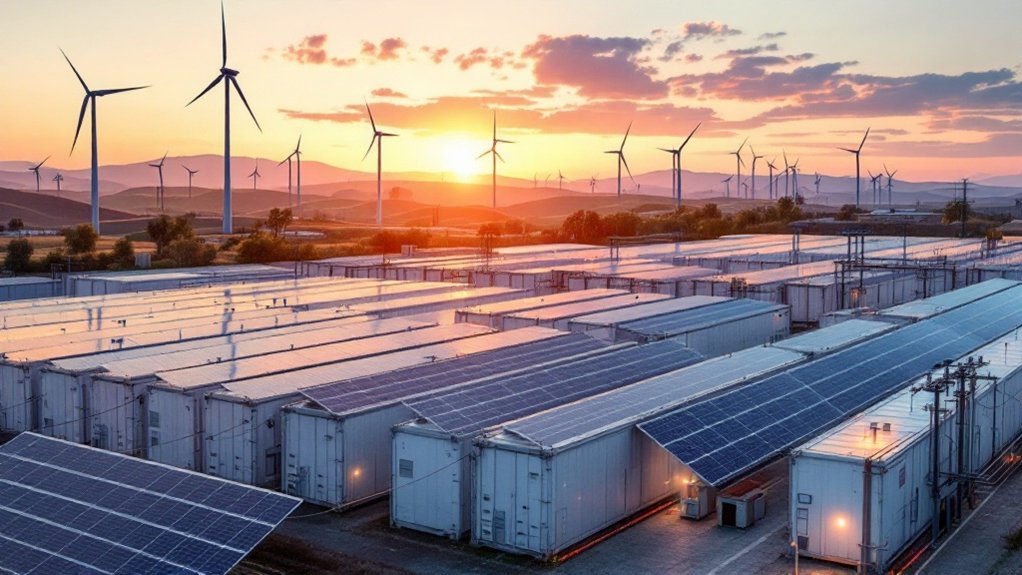
As the world shifts toward cleaner power sources, renewable energy storage has become a vital technology for maintaining reliable electricity supplies. Storage solutions solve a key problem with renewable energy: the sun doesn’t always shine, and the wind doesn’t always blow. These technologies help balance supply and demand by storing excess energy when it’s abundant and releasing it when needed. This approach directly supports the transition to net zero emissions by eliminating waste and maximizing clean energy utilization.
Pumped hydroelectric storage dominates the global storage landscape, accounting for 94% of worldwide capacity. This method uses two water reservoirs at different elevations. Water is pumped uphill when energy is plentiful and released to generate electricity when demand rises. These systems can last over 50 years and store massive amounts of energy, though they require specific geographical features. During periods of excess electricity, pumped hydro systems efficiently utilize renewable sources that might otherwise go unused, creating a crucial bridge between generation and consumption.
Battery storage systems have seen remarkable growth as costs drop. Since 2010, lithium-ion battery prices have fallen by 87%. These systems respond in milliseconds, making them valuable for grid stability. They range from home batteries to utility-scale installations that can power thousands of homes.
Thermal energy storage captures heat for later use. The technology transforms excess energy into heat for long-term storage, providing flexibility in energy deployment for sustainable systems. Molten salt storage in concentrated solar power plants can retain heat at temperatures up to 565°C. This allows solar facilities to generate electricity even after sunset.
Other innovative approaches include compressed air storage in underground caverns, flywheel systems that store energy as rotation, and gravity-based storage using weighted systems on rails. Hydrogen storage converts electricity to hydrogen through electrolysis and back via fuel cells.
These technologies provide multiple benefits beyond just storing renewable energy. They improve grid reliability, help manage peak demand periods, provide backup power during outages, and reduce the need for expensive grid upgrades.
The storage market is expanding rapidly worldwide. Analysts predict global storage capacity will reach 1,000 gigawatt-hours by 2030. China aims for 30 gigawatts by 2025, while the European Union has set a target of 600 gigawatts by 2030. Government incentives are accelerating this growth as countries recognize storage’s essential role in a sustainable energy future.
Frequently Asked Questions
How Do Recycling Processes Work for Depleted Energy Storage Systems?
Depleted energy storage systems undergo several recycling steps.
Specialized workers collect batteries in safety containers and transport them to facilities.
There, technicians disassemble the batteries, separating hazardous materials and sorting components.
Companies then recover valuable metals using chemical leaching or high-temperature smelting processes.
Some batteries aren’t fully recycled but instead tested and repurposed for second-life applications with lower power demands.
What Are the Geopolitical Implications of Renewable Energy Storage Materials?
The race for energy storage materials is reshaping global power.
China dominates processing of key minerals like lithium and cobalt. This creates new “energy superpowers” while reducing oil exporters’ influence.
Western nations are now securing their own supply chains through “friend-shoring.”
Environmental concerns are growing over mining practices. Countries are calling for new international agreements to manage resource competition and guarantee responsible sourcing.
When Will Storage Costs Reach Parity With Traditional Power Generation?
Storage costs for electricity could reach parity with traditional power generation between 2025-2027 in some countries like Australia and the U.S.
Germany may achieve this sooner due to higher electricity prices.
Battery costs are expected to drop by 47-67% by 2030.
However, material price swings, supply chain issues, and grid integration costs could delay this timeline in many regions.
How Vulnerable Are Energy Storage Facilities to Extreme Weather Events?
Energy storage facilities face significant risks from extreme weather.
Lithium-ion batteries struggle in both hot and cold temperatures. Flooding can cause dangerous short circuits and fires, as seen during Hurricane Ian when submerged EV batteries ignited.
The 2022 Elkhorn fire in California started when water entered a battery system.
Companies are responding with improved enclosures, better thermal management, strategic facility placement, and stronger structures to withstand storms.
Can Existing Grid Infrastructure Handle Large-Scale Storage Deployment?
Current power grids face significant challenges integrating large-scale storage. Most systems were built for one-way electricity flow from power plants to homes. They aren’t designed to handle the two-way flow needed for battery storage.
Aging infrastructure, limited monitoring capabilities, and regulatory hurdles further complicate deployment.
However, smart grid technologies, distributed energy resources, and grid-forming inverters are helping overcome these limitations as utilities gradually modernize their networks.
